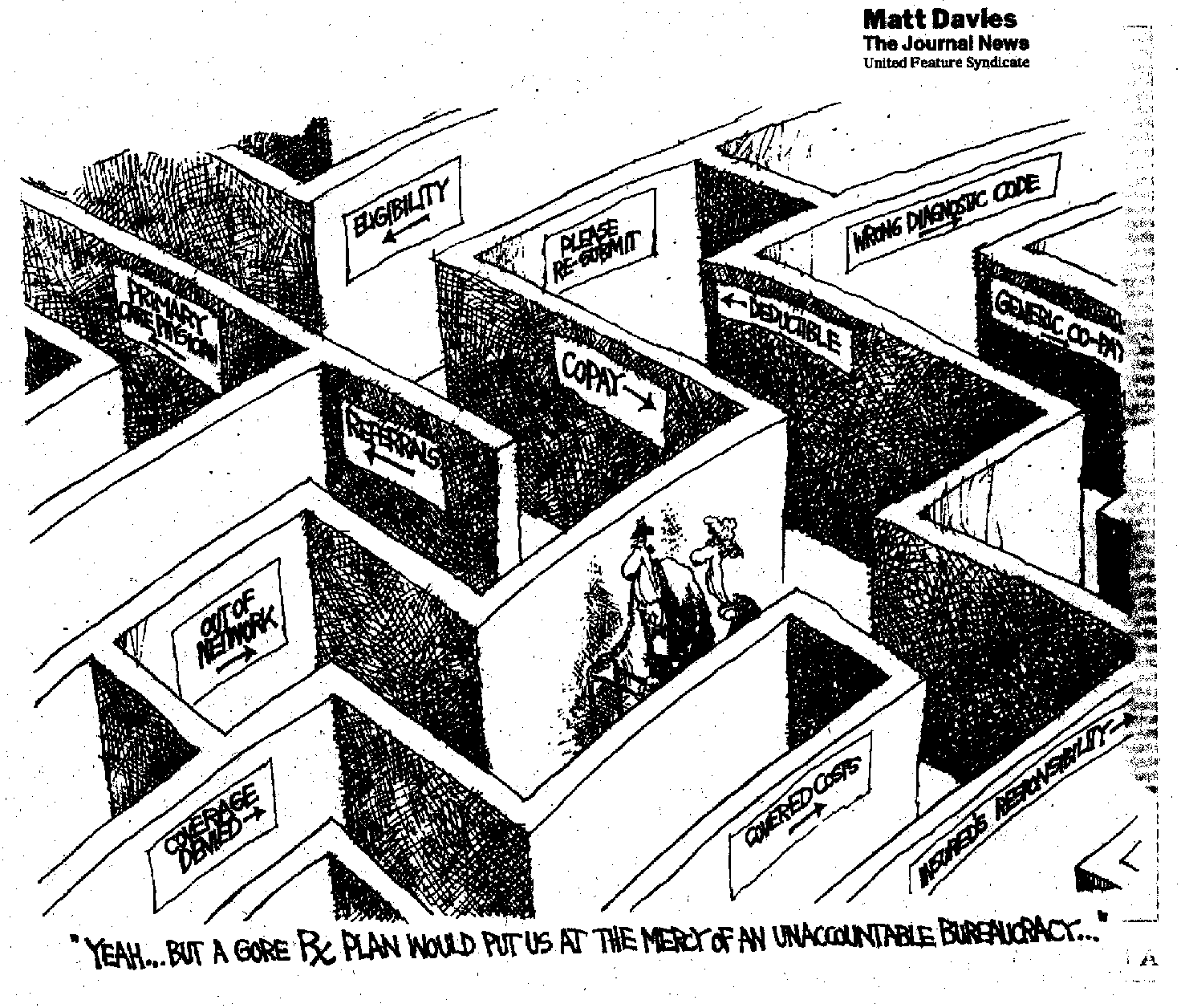MichUHCAN Newsletter for October, 2000
Drug Companies' Research Is Mostly Publicly Funded-and Not Producing New Treatments
Excerpted from Merrill Goozner's "The Price Isn't Right," in The American Prospect, September 11, 2000.by Merrill Goozner
Americans pay the highest prices in the world for prescription drugs. Drug expenditures in the United States have doubled since 1993 and are expected to double again by 2004, according to a study by the Health Insurance Association of America.
The pharmaceutical industry has one defense for the sky-rocketing price of drugs: Private-sector labs are chiefly responsible for the breakthroughs in prescription drugs. Any efforts to limit drug prices, especially under a Medicare drug benefit, will short-circuit the medical revolution now underway.
It's a tidy story, but it falls apart under scrutiny. Every independent study that's ever looked at the sources of medical innovation has concluded that research funded by the public sector-not the private sector-is chiefly responsible for a majority of the medically significant advances that have led to new treatments of disease. Moreover, the drug industry's expense for bringing those advances from lab to market is well below the $500-million claim. If one discounts the research clearly aimed at marketing and producing drugs whose contribution to public health does not exceed that of drugs already on the market, the assertion collapses on its face.
Reliance on publicly funded science is widespread. A 1997 National Bureau of Economic Research study showed that public research led to 15 of the 21 drugs considered to have the highest therapeutic value introduced between 1965 and 1992. A 1990 study by Robert Maxwell and Shohreh Eckhardt found that 60% of innovative drugs would not have been discovered or would have taken much longer to discover without research contributions from government labs and noncommercial institutions.
Do They Find New Drugs?
So what justification can there be for the industry claim that it spends an average of $500 million to create a new drug?
The figure is derived from a 1991 study by Joseph DiMasi and Louis Lasagna of the Tufts University Center for the Study of Drug Development, which is substantially industry-funded. The authors took the number of new drugs approved by the FDA and divided that number into industry research-and-development budgets, discounted for the length of time it took to bring a new drug to market.
Industry critics have long taken aim at the validity of the DiMasi-Lasagna numbers. Jamie Love of the Consumer Project on Technology pointed out that two-thirds of the develpment costs came in preclinical research, much of it government-funded.
The industry story also downplays the fact that many "new" drugs aren't medical breakthroughs. FDA statistics for the 1990s suggest that about half of industry research is aimed at developing me-too drugs [which have similar therapeutic effects to those already on the market]. "Is there a need for the 18th quinilone [a family of antibiotics]?" said Dr. Murray Lumpkin, deputy director for review management at the FDA's Center for Drug Evaluation and Research. "It depends on how you define need. If a company needs a certain percentage of the market? I won't comment."
In fairness, some searches for me-too drugs may yield clinically useful innovations. Some close cousins of rival drugs may in fact work better in some fraction of patients. In a world with infinite resources, such marginal research outlays would be defensible. But in the real world, they drive up drug prices and keep many patients from the drugs they need.
Where the Money Goes
There's another set of facts about consumer drug expenditures worth remembering: Drug firms' vaunted research-and-development budgets are rivaled by their marketing campaigns. IMS HEALTH, which tracks the industry closely, reports that direct marketing costs for pharmaceutical firms totaled $13.7 billion in 1999 or 55% of their collective research-and-development budget that year. The fastest-growing industry expenditure is direct-to-consumer advertising, which leaped 40% to $1.8 billion last year.
Pharmaceutical firms' research-and-development budgets are also dwarfed by their profit margins, which are by far the highest among U.S. industries. A Congressional Research Service report released last December showed that the pharmaceutical industry declared $24.8 billion in pretax profits in 1996, a year when the industry spent a total of $16.9 billion on research.
Government, or insurers who handle any new drug benefit for the elderly, should be given the power to negotiate bulk discounts with pharmaceutical firms. The Clinton administration's proposal gives that power to regional contractors. A better approach would be to empower Medicare to negotiate drug prices directly.
In addition, drug companies should be required to conduct clinical trials for proposed new drugs, comparing the safety and effectiveness of these drugs against both placebos and existing alternatives.
It's time for a new set of rules that will give Americans both affordable medicine and research priorities devoted to developing the next generation of cures.
Detroit Chapter Mtg:
Thurs Oct 5 - 7:30pm
Discussion and information on:
Is There a Cure for Prescription Prices?
Place: First United Methodist Church of Berkley
12 Mile Road, two blocks west of Coolidge; park in the lot on the west side,
enter from Kipling, east side
